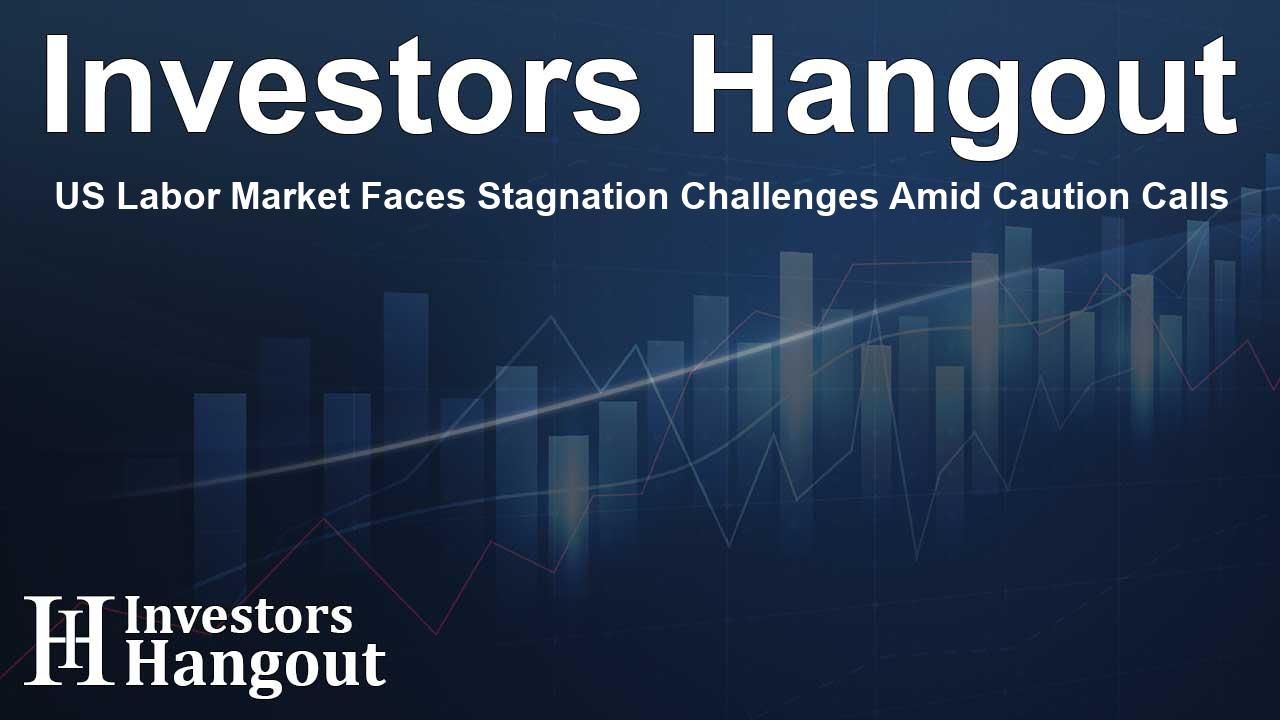US Labor Market Faces Stagnation Challenges Amid Caution Calls

US Labor Market Could Face Unprecedented Stagnation
The U.S. labor market is on the brink of facing a significant stagnation, as warned by David Kelly, chief global strategist at JPMorgan Asset Management. He forecasts a troubling period where worker growth may come to a standstill over the next five years. This insight reflects a critical moment for the economy as indicators suggest deeper structural issues ahead.
Understanding the Causes Behind Labor Market Challenges
Kelly points to several factors contributing to this expected labor slowdown. Demographic shifts, including an increasing number of retirements among the workforce, and alterations in immigration policies are pivotal aspects impacting the number of available workers. Notably, he notes that about half of the expected decline in available labor can be attributed to retirements.
This decrease in workforce participation, especially among younger adults aged 18 to 54, indicates not only a shrinking labor force but a potential economic dilemma. These challenges serve as a crucial backdrop for future discussions surrounding labor supply and demand.
The Broader Economic Impact
The implications of a stagnant labor market are far-reaching. As Kelly aptly describes, cautious consideration must be taken by the Federal Reserve and investors alike before making any decisions regarding interest rate cuts. With the unemployment rate standing at 4.2% recently, the economic landscape looks uncertain, and the Fed’s response will significantly shape future economic recovery.
The decline in labor force participation rates, which decreased from 62.65% in previous assessments to 62.22%, translates to nearly 1.2 million fewer individuals aged 16 and over either working or actively pursuing employment. This drop reflects a critical turning point in which the labor market must adapt to evolving economic needs.
Latest Market Indicators and Concerns
Recent economic data has amplified concerns among economists, who have raised alarms about the potential for a recession. The disappointing job reports in previous months have painted a grim picture, further igniting fears of economic downturns. Analysts highlight that these trends are indicative of the U.S. economy nearing a precarious 'stall speed', which raises the specter of recession on the horizon.
Moreover, Mark Zandi, Chief Economist at Moody’s Analytics, has echoed these worries, claiming the American economy is on the cusp of recession triggered by disappointing economic releases. While corporate earnings have shown resilience, indicating a nuanced economic recovery, the labor market’s stagnation poses a serious predicament for future growth.
Corporate Perspectives Amidst Economic Challenges
Despite these ominous forecasts, there are signs of corporate robustness. For instance, Ed Yardeni, President of Yardeni Research, highlights that while firms may be hesitant to hire, they are not resorting to layoffs. This indicates that businesses are trying to navigate through economic turbulence by maintaining their workforce amidst shifting economic pressures.
Further analysis suggests that the upcoming quarters may witness modest GDP growth fueled by consumer spending trends, with estimates placing third-quarter growth at approximately 2.1%, alongside a 1.6% increase in consumer spending.
Conclusion: Preparing for Uncertain Economic Times
The labor market's potential stagnation may significantly influence both monetary policy and the broader economic atmosphere. Business leaders, policymakers, investors, and the workforce at large must brace for the next phase of economic transition. A proactive approach, focusing on adaptability and recovery strategies, will be crucial as we navigate these challenging waters.
Frequently Asked Questions
What is the primary concern regarding the U.S. labor market?
Experts warn of potential stagnation, leading to no growth in worker numbers over the next five years.
How does retirement affect the labor market?
Retirements are causing a significant decline in the workforce, impacting the overall availability of workers.
What economic indicators are causing alarm?
The rising unemployment rate and decreasing labor force participation indicate potential recession concerns.
How are corporate earnings performing in the current climate?
Generally, corporate earnings show strength, suggesting resilience despite the economic challenges.
What should investors consider regarding interest rates?
Investors are advised to exercise caution with any interest rate decisions amidst fluctuating labor market conditions.
About The Author
Contact Owen Jenkins privately here. Or send an email with ATTN: Owen Jenkins as the subject to contact@investorshangout.com.
About Investors Hangout
Investors Hangout is a leading online stock forum for financial discussion and learning, offering a wide range of free tools and resources. It draws in traders of all levels, who exchange market knowledge, investigate trading tactics, and keep an eye on industry developments in real time. Featuring financial articles, stock message boards, quotes, charts, company profiles, and live news updates. Through cooperative learning and a wealth of informational resources, it helps users from novices creating their first portfolios to experts honing their techniques. Join Investors Hangout today: https://investorshangout.com/
The content of this article is based on factual, publicly available information and does not represent legal, financial, or investment advice. Investors Hangout does not offer financial advice, and the author is not a licensed financial advisor. Consult a qualified advisor before making any financial or investment decisions based on this article. This article should not be considered advice to purchase, sell, or hold any securities or other investments. If any of the material provided here is inaccurate, please contact us for corrections.
